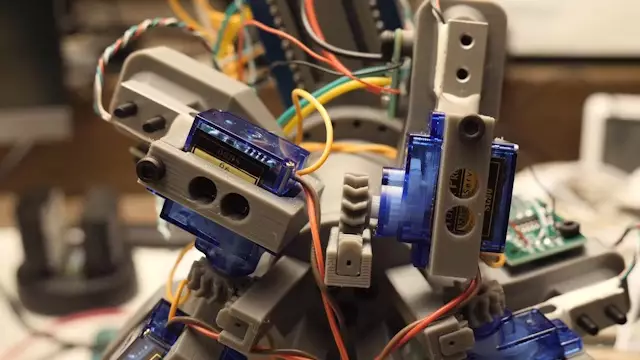The concept of a robot designed to manipulate locks by leveraging the principles of physics isn’t merely a fanciful idea from sci-fi; it embodies the frontier of technological innovation and security. Traditional lock picking, often romanticized in films and popular culture, relies on manual dexterity, precise manipulation, and a deep understanding of lock mechanisms. However, automating this process with a robot introduces a new paradigm—one where physical laws are harnessed to unravel locks with precision and speed. This approach shifts the narrative from human skill-based lock hacking to a sophisticated interplay of sensors, mechanics, and algorithms.
In recent experiments, developers have attempted to create robotic lock pickers that do not just brute-force their way through locks but instead mimic the tactile finesse of experienced lockpickers. They aim to design machines capable of sensing tension and resistance within the lock’s internal components, effectively “feeling” their way to the correct combination. Such innovation demands a multidisciplinary approach, blending mechanical engineering, physics, and computer science, to produce a machine that can adapt and respond dynamically to different lock designs.
This evolution signifies a pivotal step in understanding security flaws. If robots become capable of bypassing traditional locks through physics-based sensing, the entire framework of physical security needs reevaluation. It suggests a future where security systems must incorporate more complex, resistant designs to thwart these advanced threats. The human element of lockpicking—once seen as an art—might soon be supplemented or replaced entirely by these intelligent machines.
The Challenges and Limitations of Physics-Based Lock Cracking
Despite the promise, the current state of robotic lock picking remains in its infancy. The effort to develop a machine that can correctly sense and respond to internal lock mechanisms is fraught with challenges. Initial prototypes relied on brute-force methods or simplified approaches, which, while effective in some cases, proved slow and inefficient for real-world applications. The next logical progression was to automate the nuanced act of applying the right amount of tension and torque—traditionally a skill refined through experience.
However, accurately sensing internal resistance poses significant technical hurdles. Locks are designed to be resistant to tampering, with complex pin configurations, locking barrels, and security features that disrupt sensor readings. Devices attempting to emulate the human tactile response must incorporate highly sensitive force sensors, rapid processing algorithms, and adaptive control mechanisms—components that are difficult to miniaturize and calibrate effectively.
The project led by the team behind Sparks and Code exemplifies this struggle. Their attempts to create a robotic lockpicker based on physics—sensing tension in each lock spring—highlight the intricate dance between theory and practical implementation. Multiple iterations, software tweaks, and mechanical adjustments have failed to produce reliable, speedy performance. Nonetheless, the persistence reflects a broader truth: technological breakthroughs often stem from iterative failures and learning from limitations. The current delays and setbacks should not overshadow the significance of the pursuit but rather emphasize that mastery over physical lock mechanisms by robots remains an aspirational goal.
The Future of Lock Picking: Ethical, Security, and Technological Implications
The rich potential of physics-based robotic lock pickers extends far beyond the thrill of experimentation. As these machines improve, the implications for security—both positive and negative—become increasingly profound. On one hand, they expose vulnerabilities in traditional lock designs, pushing manufacturers to develop more resilient and intelligent security solutions. On the other hand, they embody tools that, if misused, could compromise privacy and safety, making theft or unauthorized access easier for malicious actors.
This technological arms race prompts ethical considerations. Developers and researchers must weigh their work’s benefits against potential abuses. Building robotic lock pickers could accelerate the development of smarter, more secure locking systems that incorporate multi-layered defenses—such as biometric access, electronic verification, or nanosecurity features—to counteract these emerging threats.
Furthermore, the pursuit of such technology reflects a broader narrative about innovation: the desire to push boundaries and challenge conventions. It is crucial for the cybersecurity community to monitor these advancements, ensuring that progress in robotic lockpicking serves as a catalyst for improved security rather than a tool for intrusion. Ultimately, the line between technological curiosity and malicious intent must be carefully navigated, fostering innovation that elevates security standards rather than undermines them.
The journey toward robotic lock pickers that use physics principles is a testament to human ingenuity and the relentless pursuit of mastery over complex systems. While the terrain is riddled with technical obstacles, each setback is a stepping stone toward transformative security solutions. This convergence of mechanics, physics, and coding encapsulates our unyielding drive to understand and manipulate the world—a drive that will undoubtedly shape the future of physical security in ways we are only just beginning to comprehend.

